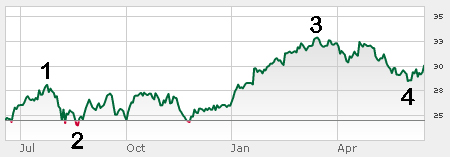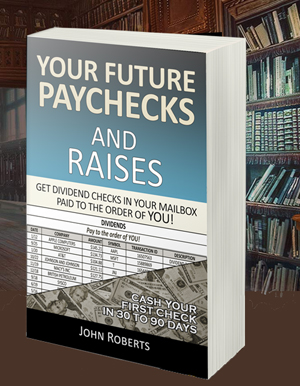Buying Stocks At A Discount – Setting A Trap
We said earlier in our Buy Stocks At A Discount series that having the right mindset was critical when buying stocks. And I admitted that may sound like a bunch of psycho-babble at first, but then we looked at two important mindsets.
They were the Cool Mindset (let cooler heads prevail) and the Bus Stop Mindset (stocks are like a bus stop – if you miss the bus, another will come around in five minutes). Both of these mindsets help you keep a more deliberate attitude when buying stocks, as opposed to just rushing out in a frenzy and paying top dollar.
Okay, so let’s say we have our mind right. How do we actually do this?
It’s pretty simple, really. We do two things. We pick the discount we want to try for, and we use a special kind of order to buy it.
I use a couple of methods to figure out the discount I want to buy at. Often I just decide, arbitrarily I might add, that I’ll buy the stock if I can get it for a 10% discount.
Why 10%? Because the math is easy and I can do it in my head. For example, if the stock is going for $30 a share, then I want $3 off. See how easy that was? I just moved the decimal point to the left (from $30.00 to $3.000).
So if I want $3 off of a stock that is $30, then I don’t want to pay more than $27 for it ($30 – $3 = $27).
And it’s not unusual at all for a stock to move up and down 10%. Just look at the Microsoft chart below. From point 1 to 2 was a 10% drop and from point 3 to 4 was a 12% drop. And in between those points are three others where the stock dropped from 8 to 12%.
So in the ten month period shown in the chart, there were five opportunities to buy the stock at about a 10% discount, or more. Can you find all five of them? 1-2 and 3-4 are two of them.
That’s an average of every two months that the stock goes on sale. So what’s the rush, right?
Okay, so I’ve decided I want to buy Microsoft stock at a 10% discount. What do I do?
Well, I set a trap. Just like if you keep noticing a mouse in your house, and you keep seeing him come back to the same place. You set a trap in that place. And eventually the mouse wanders over to the trap and bang, you got him.
So let’s talk about a stock trap.
Now the average investor doesn’t set a trap. He just rushes out and buys at the current price. That’s known in investing jargon as placing a market order, i.e. just paying whatever price the stock market currently lists the stock for.
We aren’t going to place a market order. We are going to limit the price we will buy the stock at. We are going to limit it to $27 a share in this example.
Can you guess what this type of order is called?
It’s called a “limit order.” I know you got that one, so go to the head of the class.
And using a limit order is how we are going to set the trap to grab this stock at a discounted price.
Limit orders are not complicated. You either tell your broker, or your online trading system that you will buy a certain number of shares of stock for no more than a certain price from today through some date in the future.
In this case, I might enter into the system that I want to buy 100 shares of Microsoft stock (MSFT) for no more than $27 a share any time in the next six months if it goes down to that price.
And then I just go away and don’t worry about it. The price will go up and the price will down and eventually it may get to $27 a share. And then bang, my trap slams shut. My order automatically executes and buys the shares at $27 a share just as soon as it touches that price.
Just like the mouse sniffing around the cheese baited trap.
Bang! Got it!
See how I didn’t have to spend any time constantly checking this stock? I just set the trap and went about my business.
So the whole thing is pretty effortless, really. But here’s where it gets really good. Because placing limit orders is free. That’s right. It costs you nothing to have the system constantly looking for your bargain price and buying for you when it goes on sale.
Kind of like having a thrifty personal shopper, isn’t it?
So to summarize, we decide to buy our stock at a discount and not pay full price. We set a trap. We walk away and don’t worry about it. And the stock gets automatically bought for us if it goes on sale.
And this service is free.
How cool is that?
To your health and prosperity – John
P.S. You might like my latest book Stock Investing For Beginners. It’s a fast, easy read, and we touch on placing orders so you can buy your first stock. You can browse through it for free right here.





